The Samsung Galaxy Note 4 and Nexus 5 may both be high-end smartphones, but they each offer a very different experience. Samsung’s new handset is a feature-packed flagship phablet (try saying that ten times fast), while the Nexus focuses on delivering the stock Android experience on a budget. Read on as we delve into the key difference between the two handsets.
Size
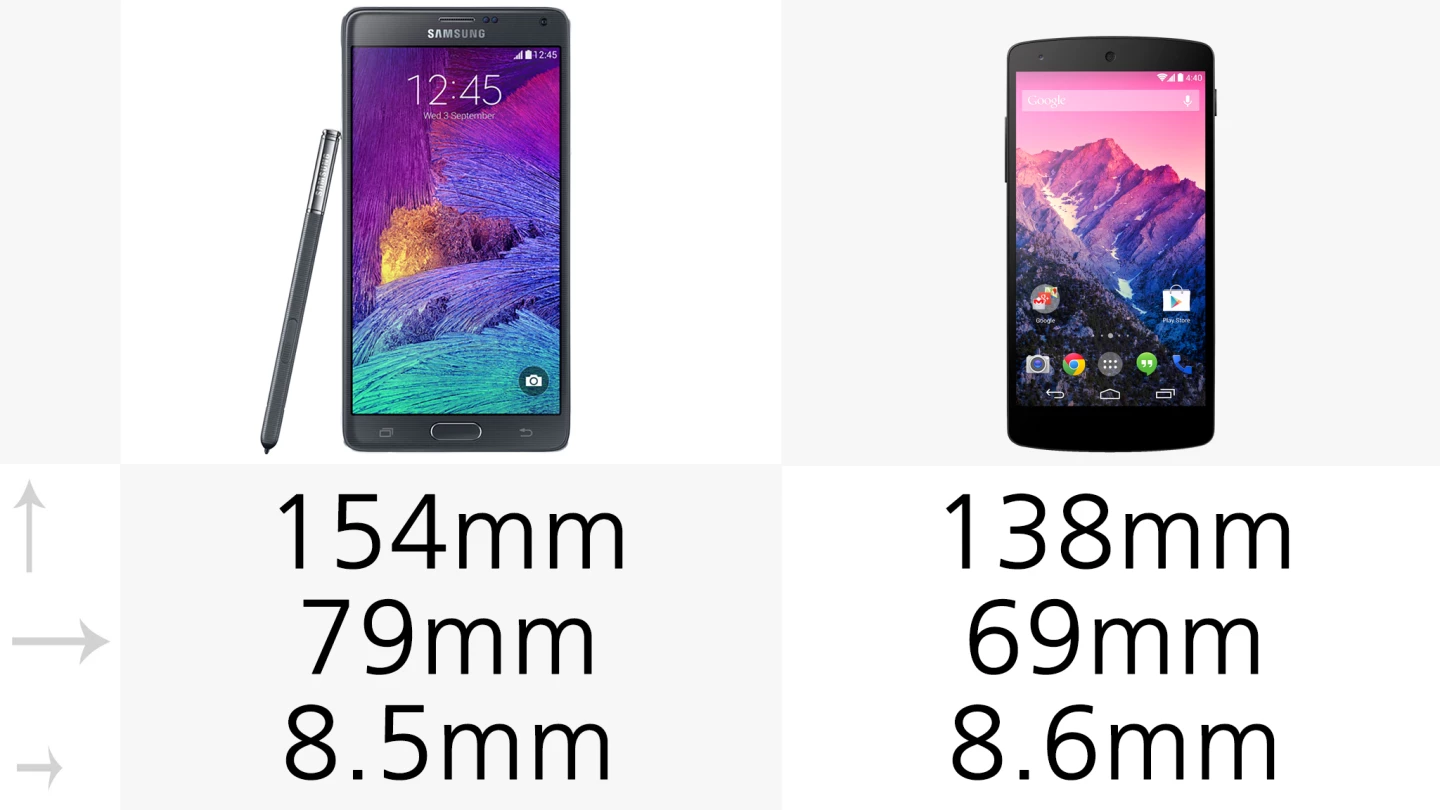
The two devices are almost identical when it comes to thickness, but the Galaxy Note 4 is 12 percent longer and 14 percent wider than the Nexus 5.
Weight
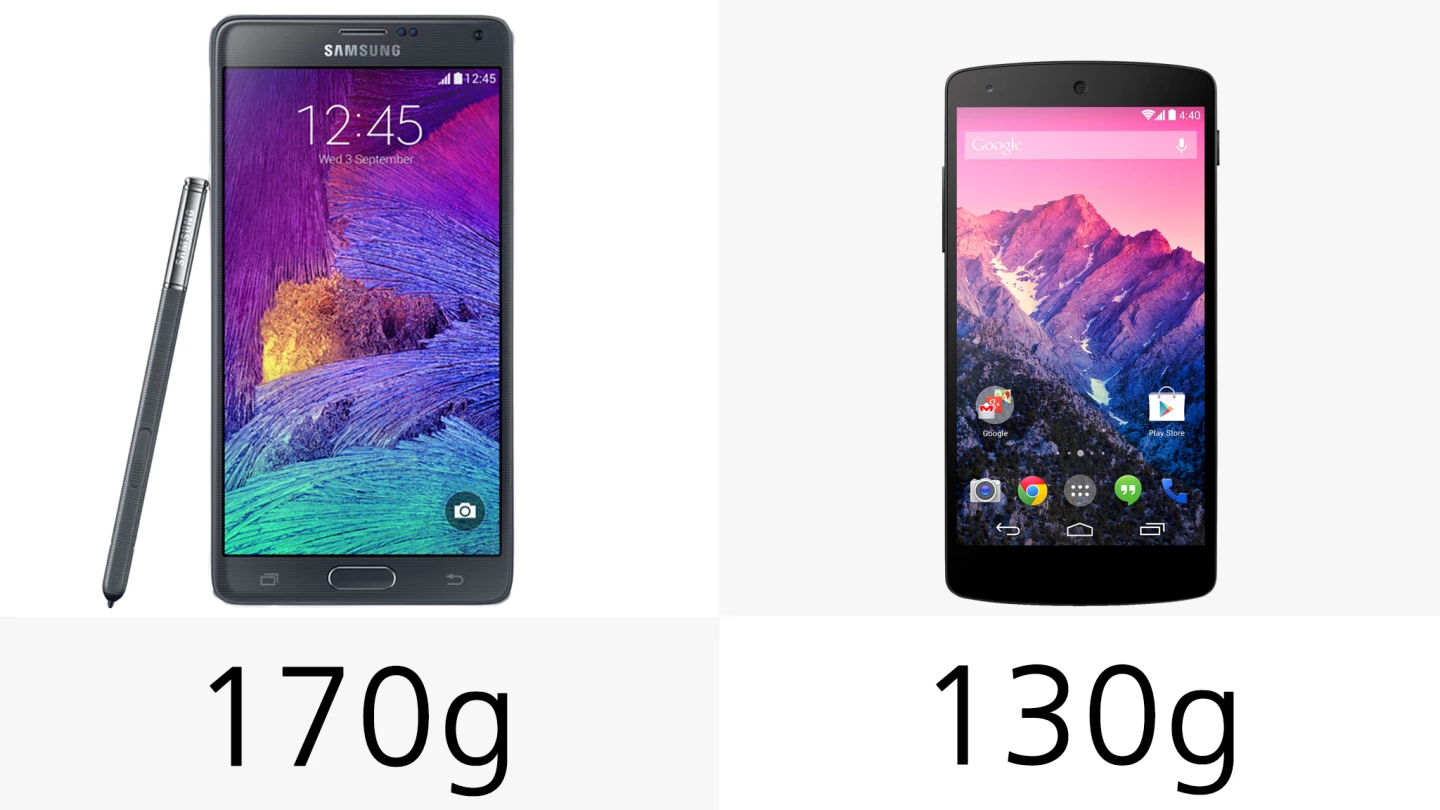
There’s a big difference when it comes to weight, with the Galaxy Note 4 coming in at 31 percent heavier than the Nexus 5.
Build
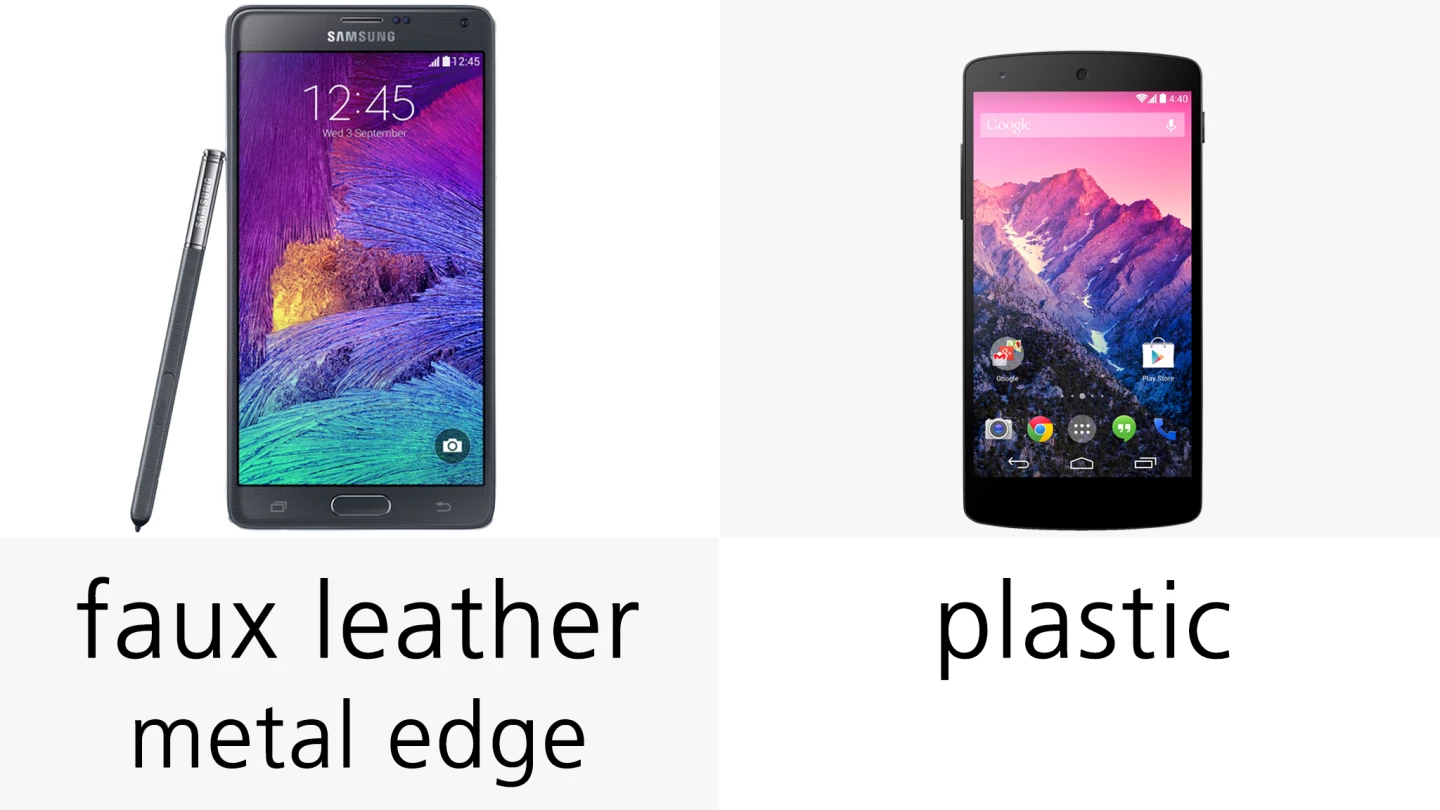
The Nexus 5 features a plastic construction, while the Note 4 opts for a faux leather (plastic) back with a metal band around its edges.
Colors
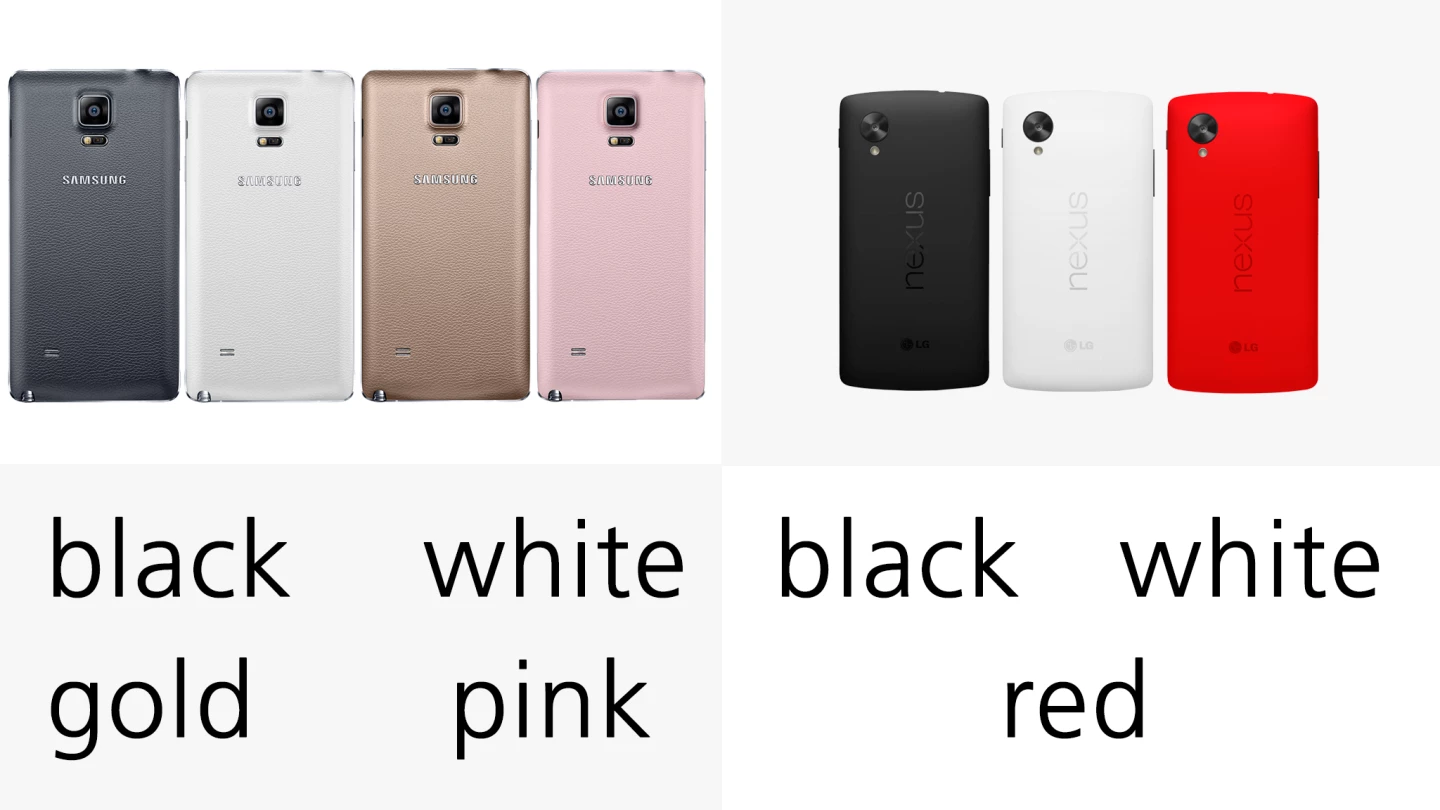
We're looking at four color options for the Note and three for the Nexus.
Display (size)
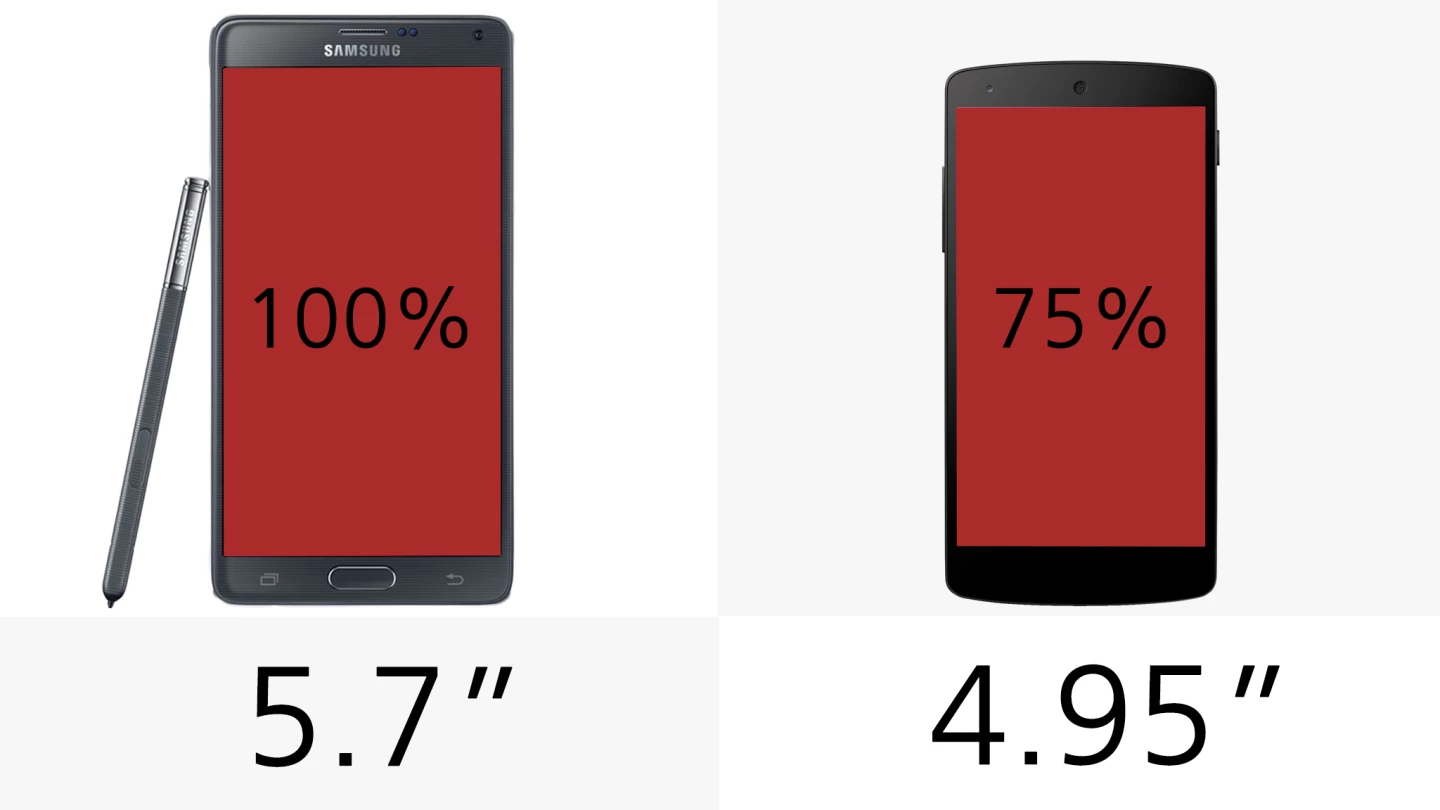
The Note 4’s display size places it firmly in the phablet category, giving you 32 percent more real estate than the Nexus 5 does.
Display (resolution)
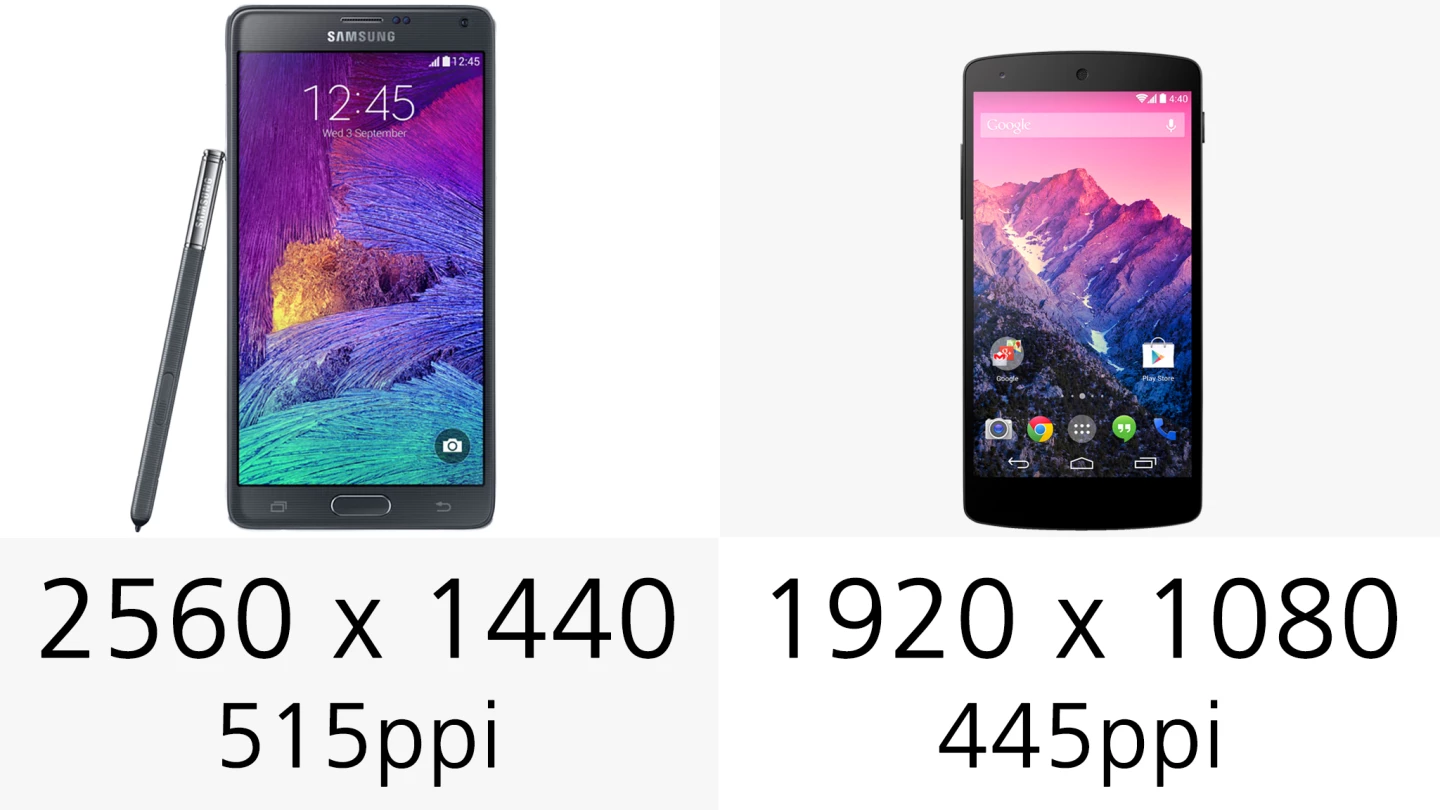
It’s a similar story when it comes to resolution, with the Note 4 packing 16 percent more pixels per inch (PPI) than the Nexus 5.
The Nexus 5's 1080p screen is already very sharp, though, so we'll need to spend more time with the Note 4 to gauge whether that Quad HD display really makes a noticeable difference.
Stylus

The Note 4 continues the series' focus on stylus input, with the new and improved S Pen offering twice the pressure sensitivity of the previous generation version.
Fingerprint sensor

Like the Galaxy S5 and Galaxy Alpha, the Note 4 integrates a fingerprint sensor into its home button, allowing users to bypass other security measures by swiping a finger across the button.
Heart rate monitor
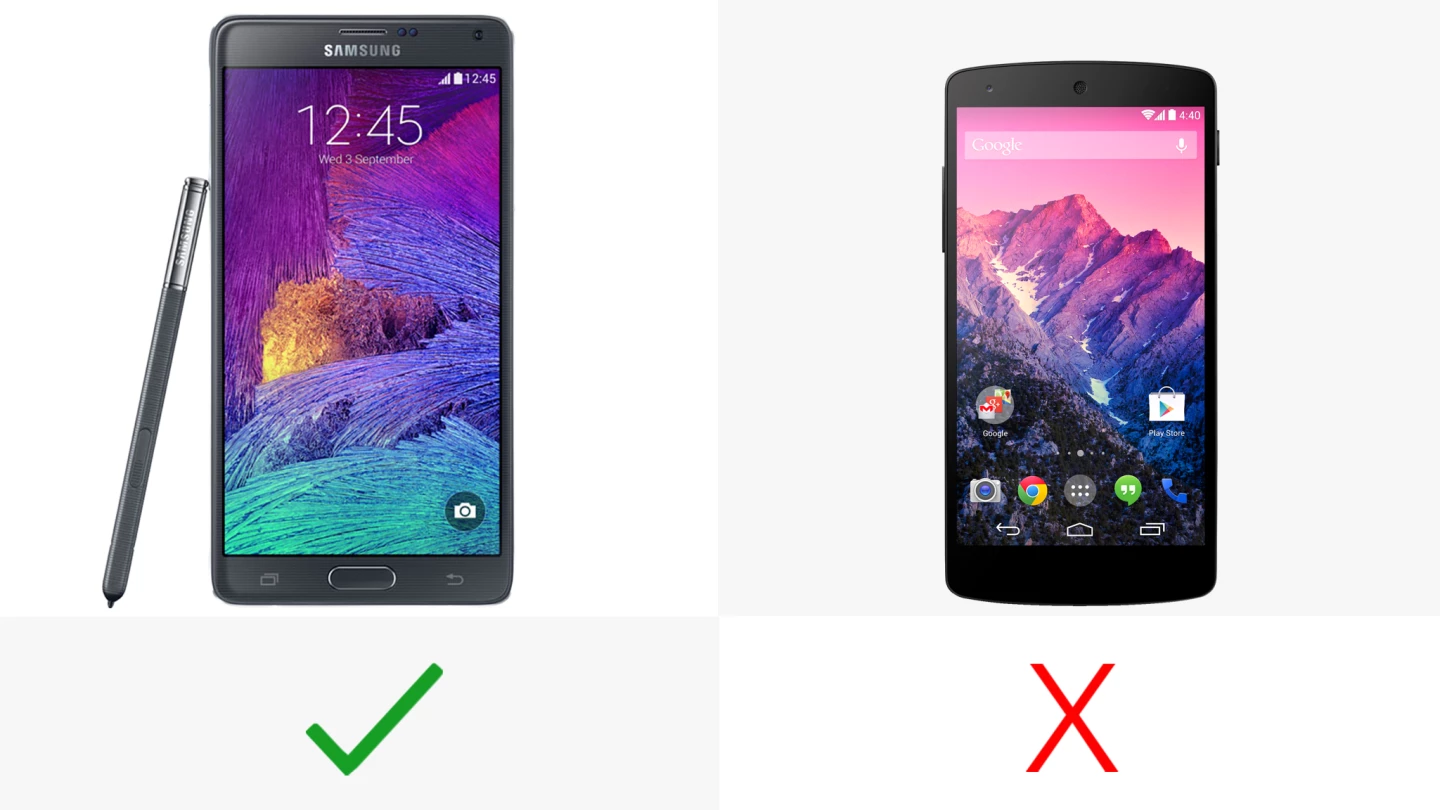
The Note 4 features heart rate monitoring tech built into the back of the device.
Water resistance
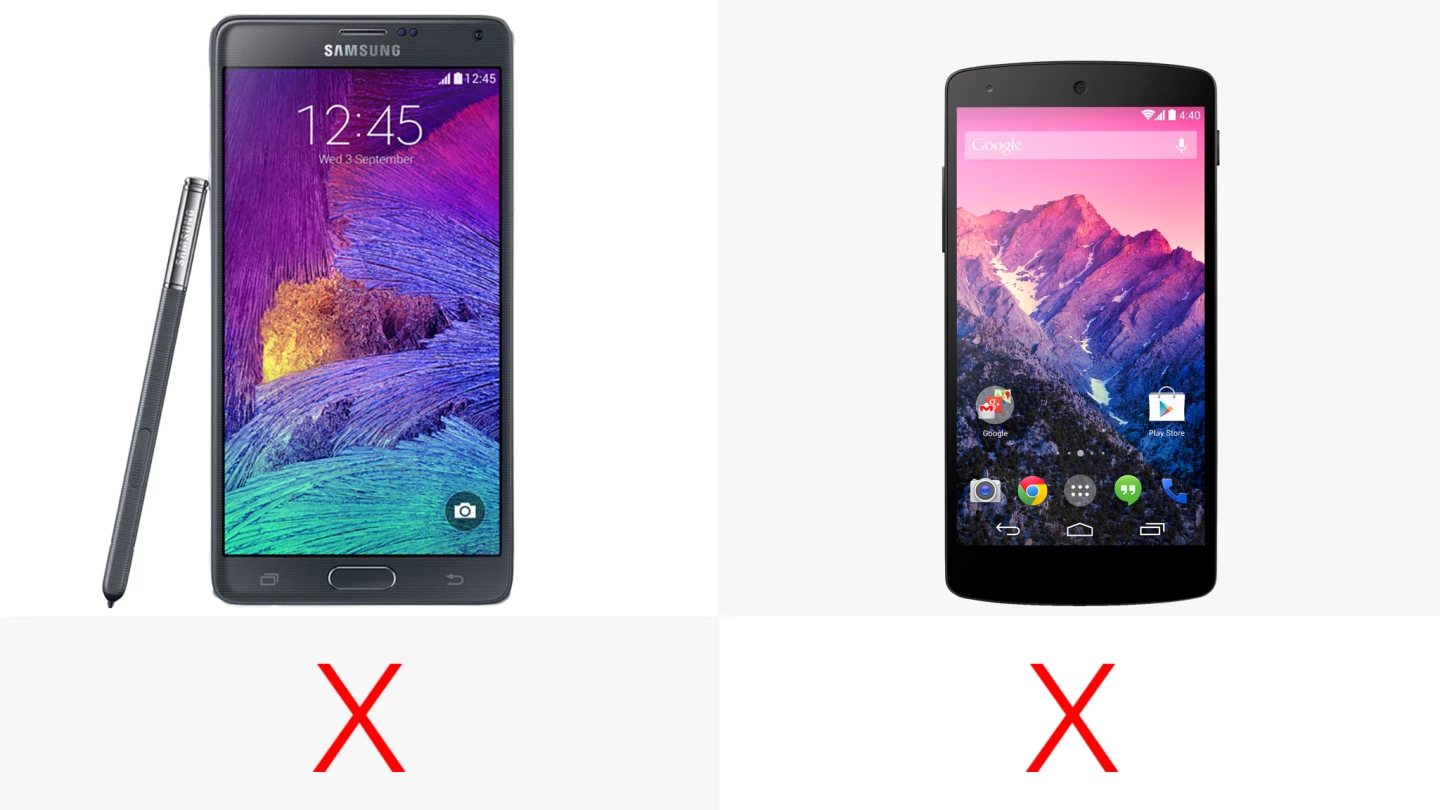
Neither device here offers any water resistance tech.
Battery

The Note 4’s battery holds 40 percent more juice than the Nexus 5’s does. Given the Note's larger, higher-resolution display, this is probably a necessity. Without testing, though, its impossible to say for sure how the devices’ running times will compare.
Ultra Power Saving Mode
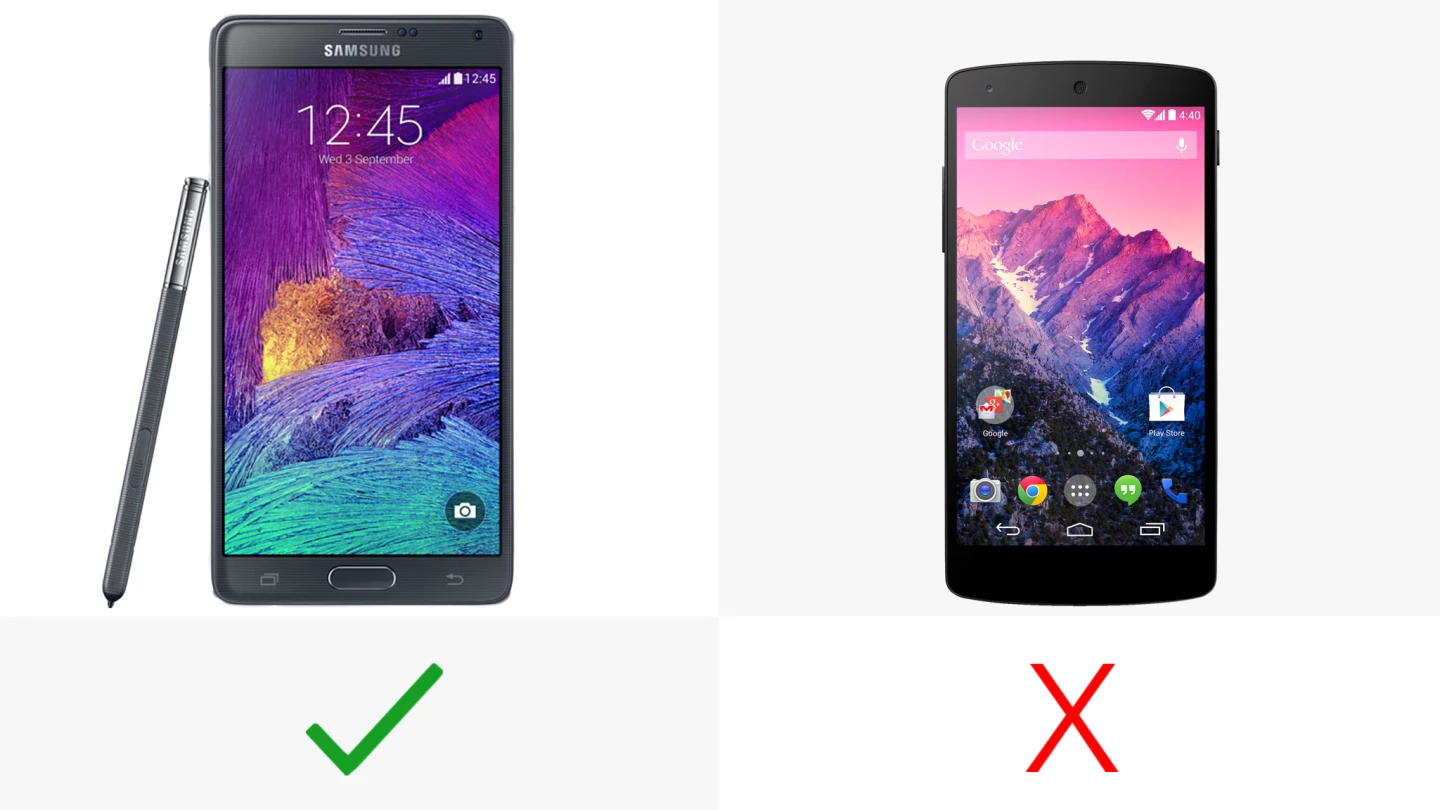
While we can’t yet judge the Note 4’s running time, we do know that it packs a power sipping mode that helps squeeze out extra battery life when charge is running low. The mode turns off all but the most essential apps and processes, significantly extending uptimes.
Fast charging

According to Samsung, the Galaxy Note 4 can charge from 0 to 50 percent in "about half an hour," providing you’re using the supplied charger.
Cameras
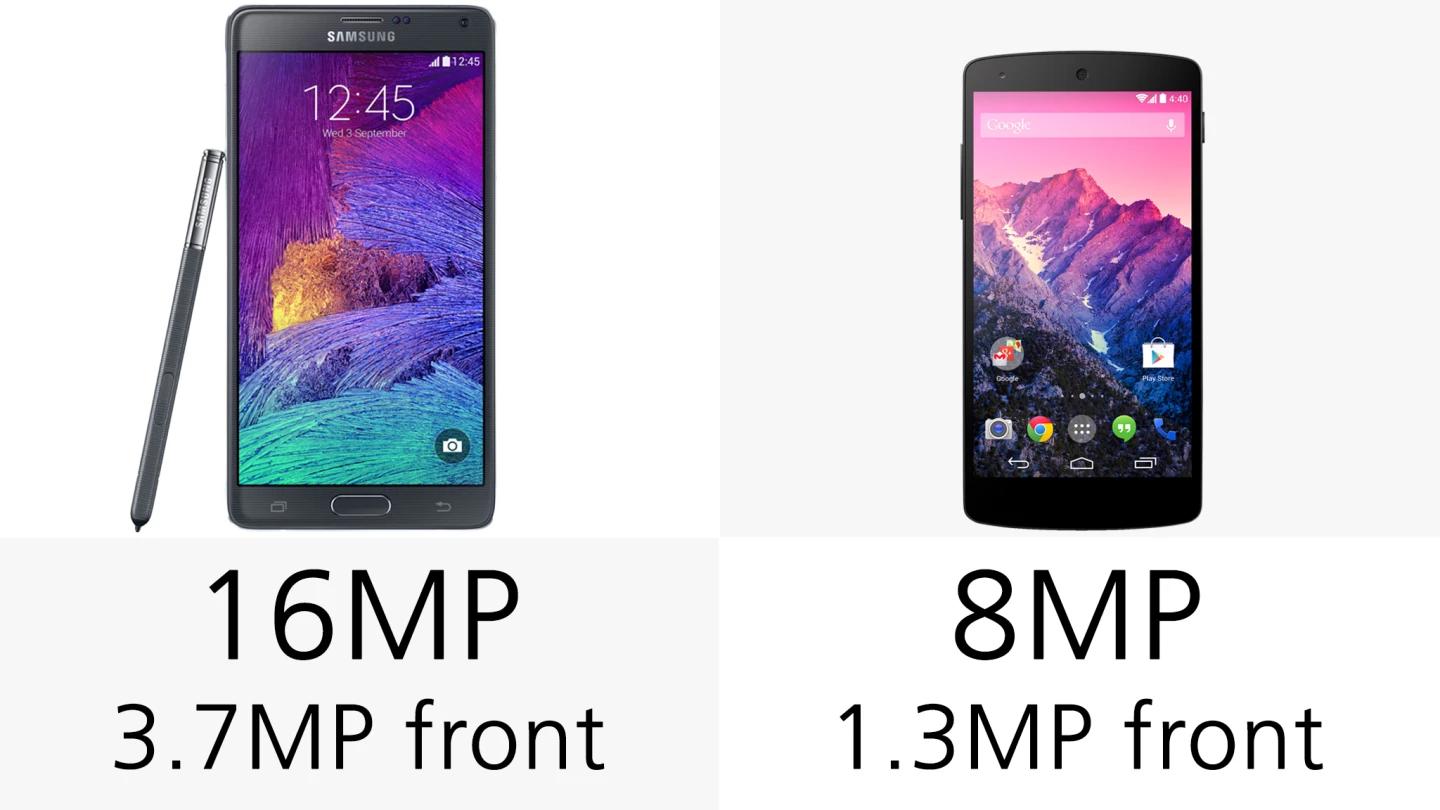
On paper, the Note 4’s cameras trounce those of the Nexus 5, and while this may well be the case, we can’t say for sure until we get some extended hands-on time with the new device.
In our review, we found the Nexus 5’s camera to be solid, but far from the best smartphone shooter out there.
Infrared
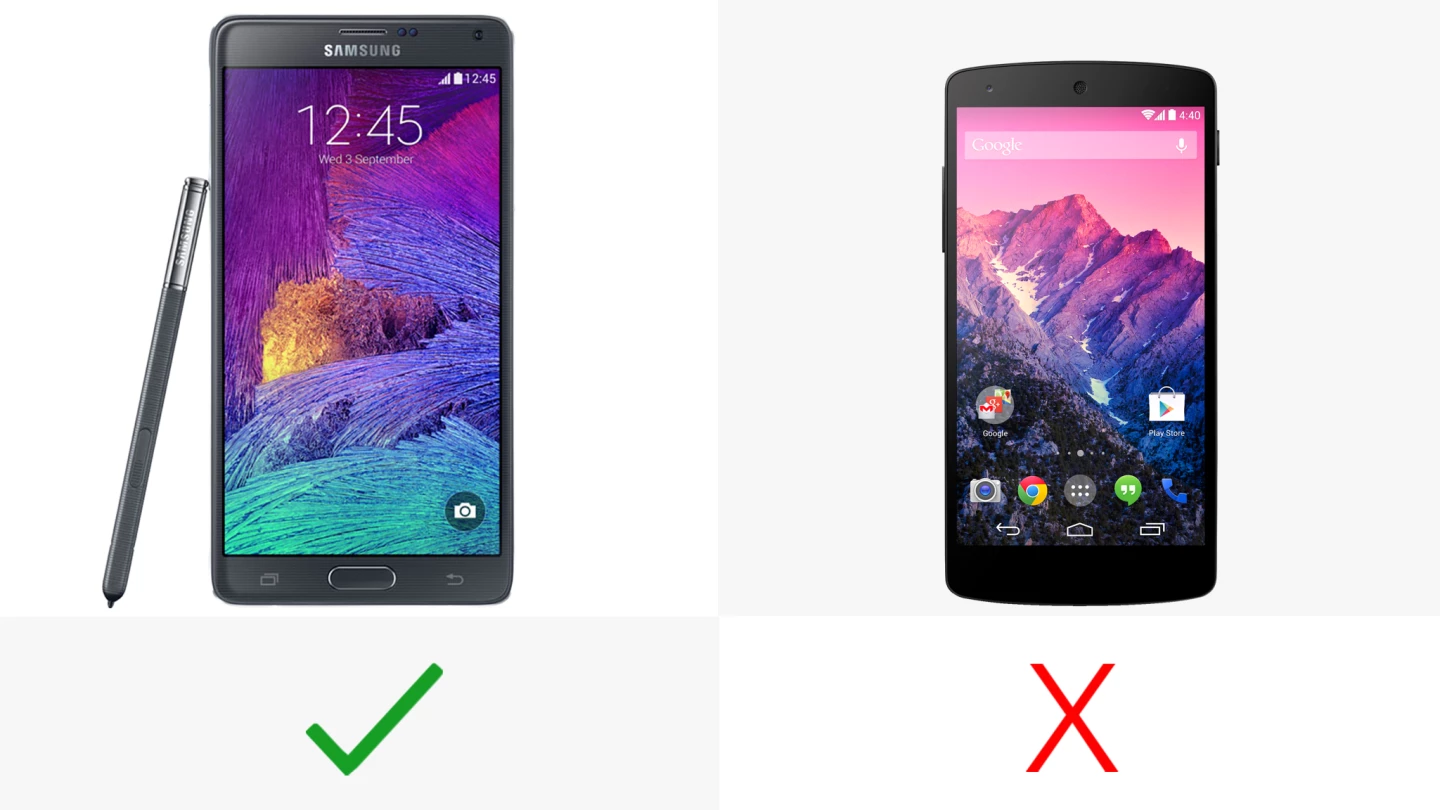
The Note 4 packs an IR blaster, meaning you can use it as a TV remote.
Split-screen multitasking
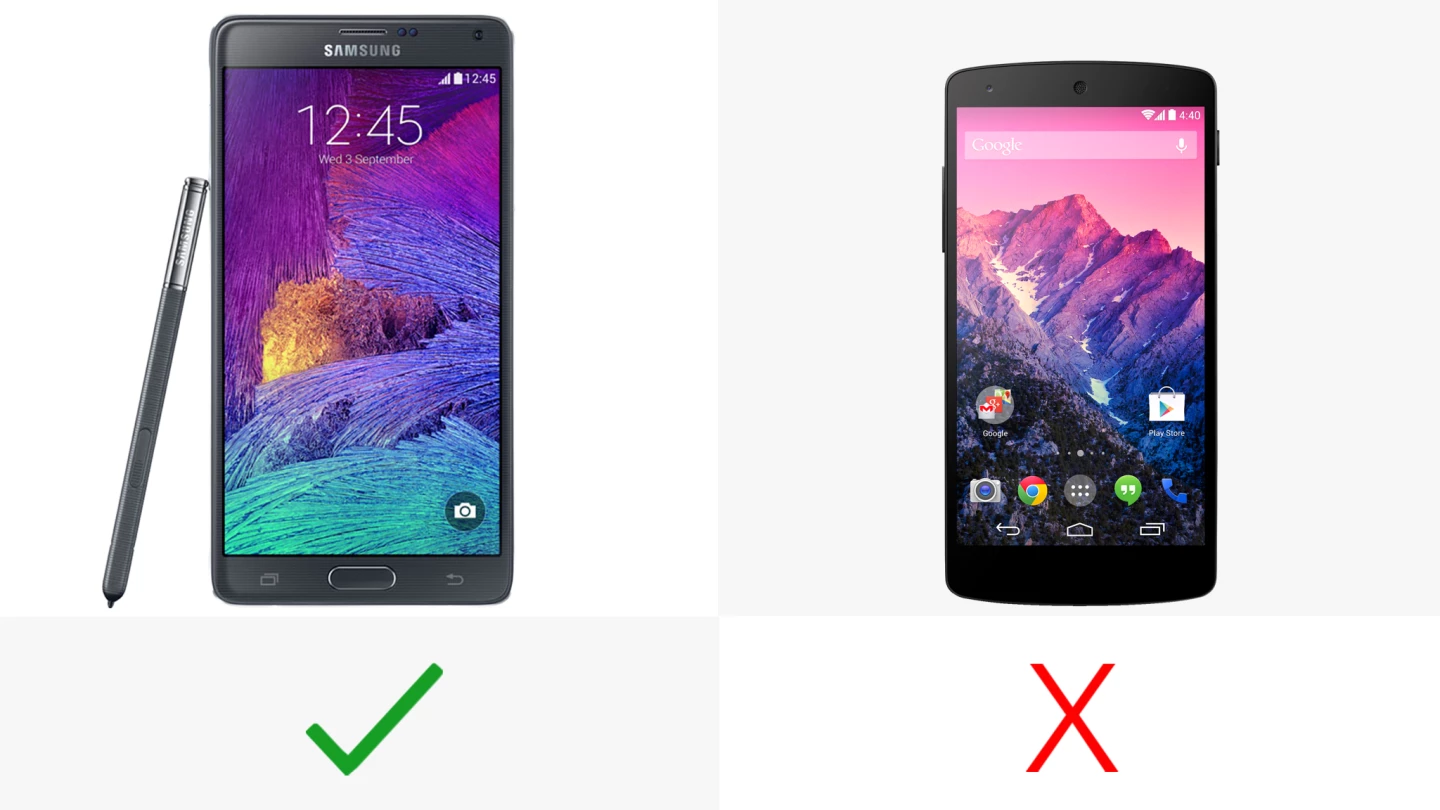
Samsung’s augmented version of Android allows you to run two applications side by side.
One-handed mode
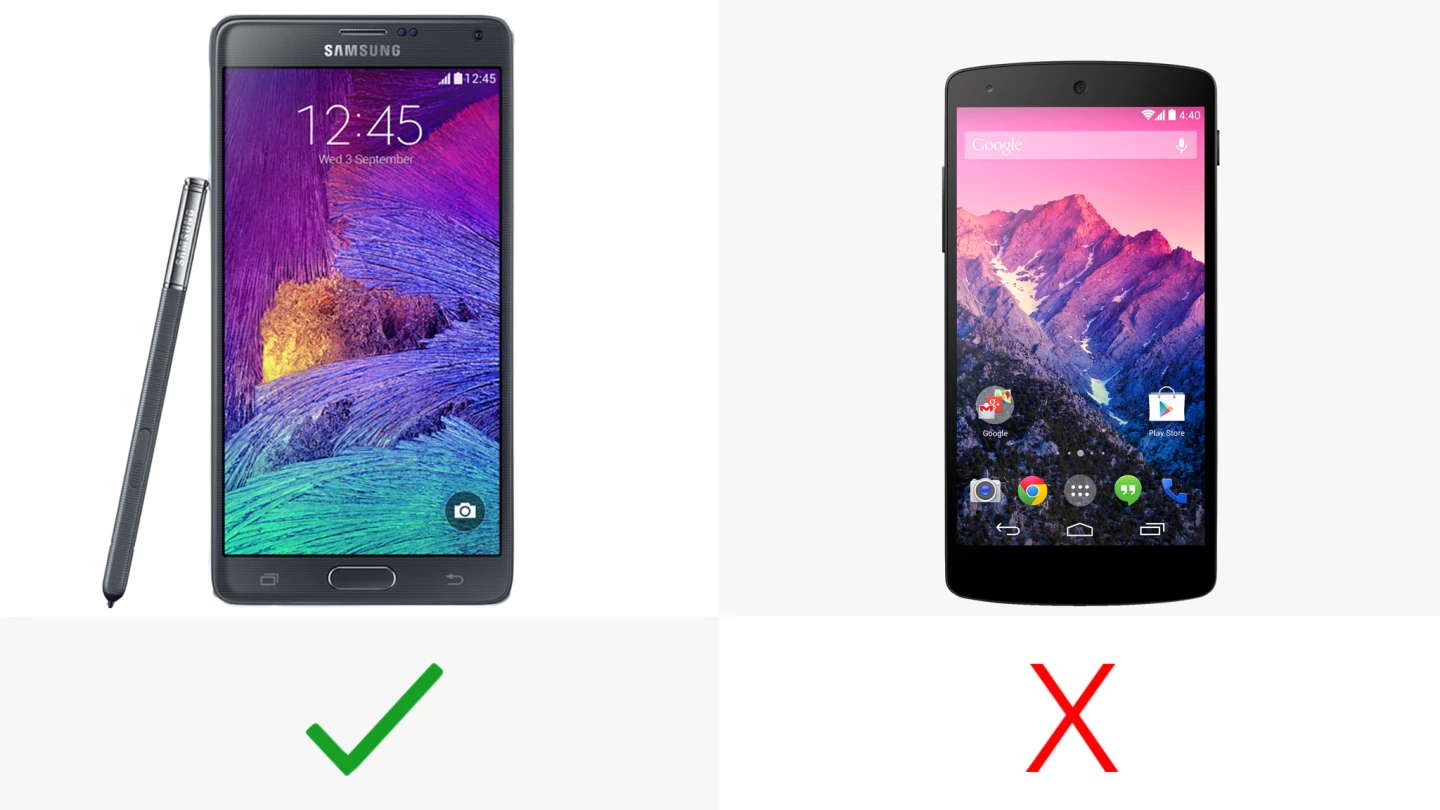
One big problem with phablets is that they’re a little too large to use comfortably with one hand. Luckily, Samsung has included the ability to shrink down the usable display area to the edge of the screen, making it much more manageable.
Virtual reality

Samsung’s new handset is designed to be slotted into the company’s Gear VR headset, providing the accessory with its display and processing.
We're still waiting to see how much content will be available for the platform when it launches later this year, and you will of course have to purchase the headset separately from the Note 4, but it is another tick in the positives column for the new device.
You could probably turn the Nexus 5 into a serviceable (and cheap) VR headset with Google Cardboard, but remember that it's a developer kit and not yet designed for consumers.
Storage
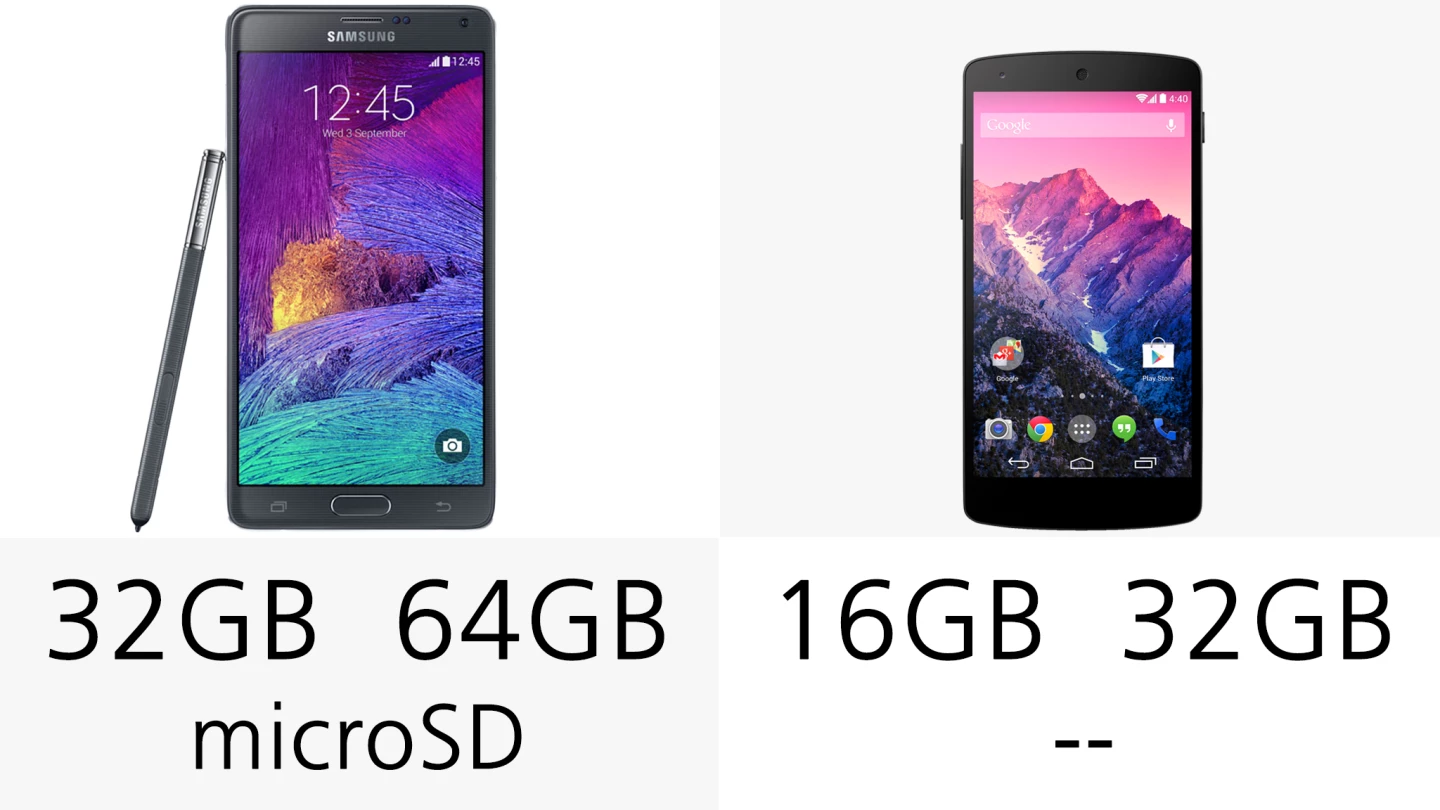
Both handsets are available in two storage configurations, with the Note 4 offering the more expansive options. The Samsung smartphone is also fitted with a microSD card slot, meaning you can easily expand available space with a memory card.
Processor

The Galaxy Note 4 has the newer Snapdragon 805 inside, but remember that its GPU is also pushing about 78 percent more pixels. We didn't notice any lag during our hands-on time with the Note, but the Quad HD LG G3 was a bit choppy out of the box. Stay tuned.
You’ll want to note that we’re listing the chip that you’ll find in the LTE version of Samsung's device, with the HSPA/international version packing an eight core Exynos CPU.
RAM
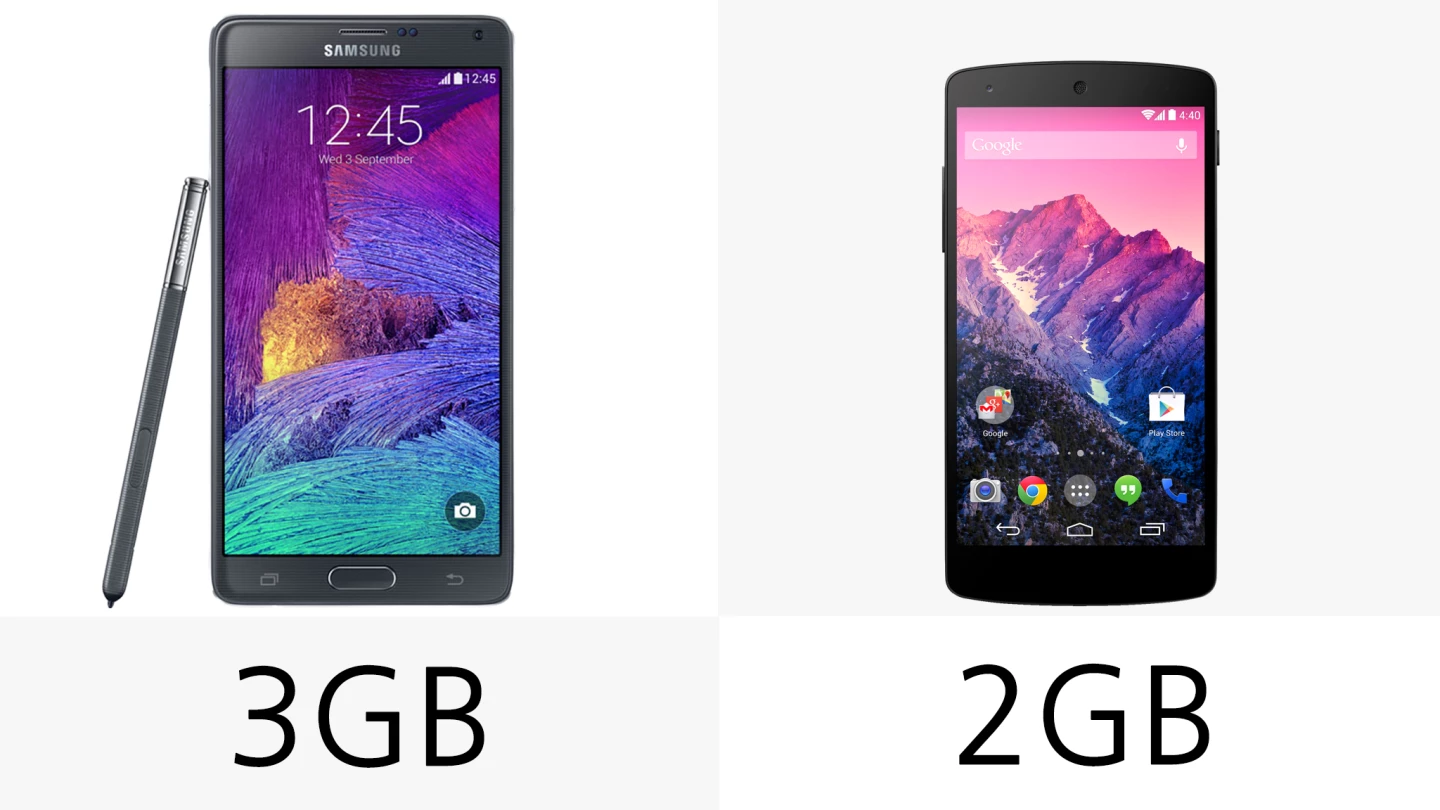
The Note 4 packs 1 GB more memory than the Nexus 5.
Software
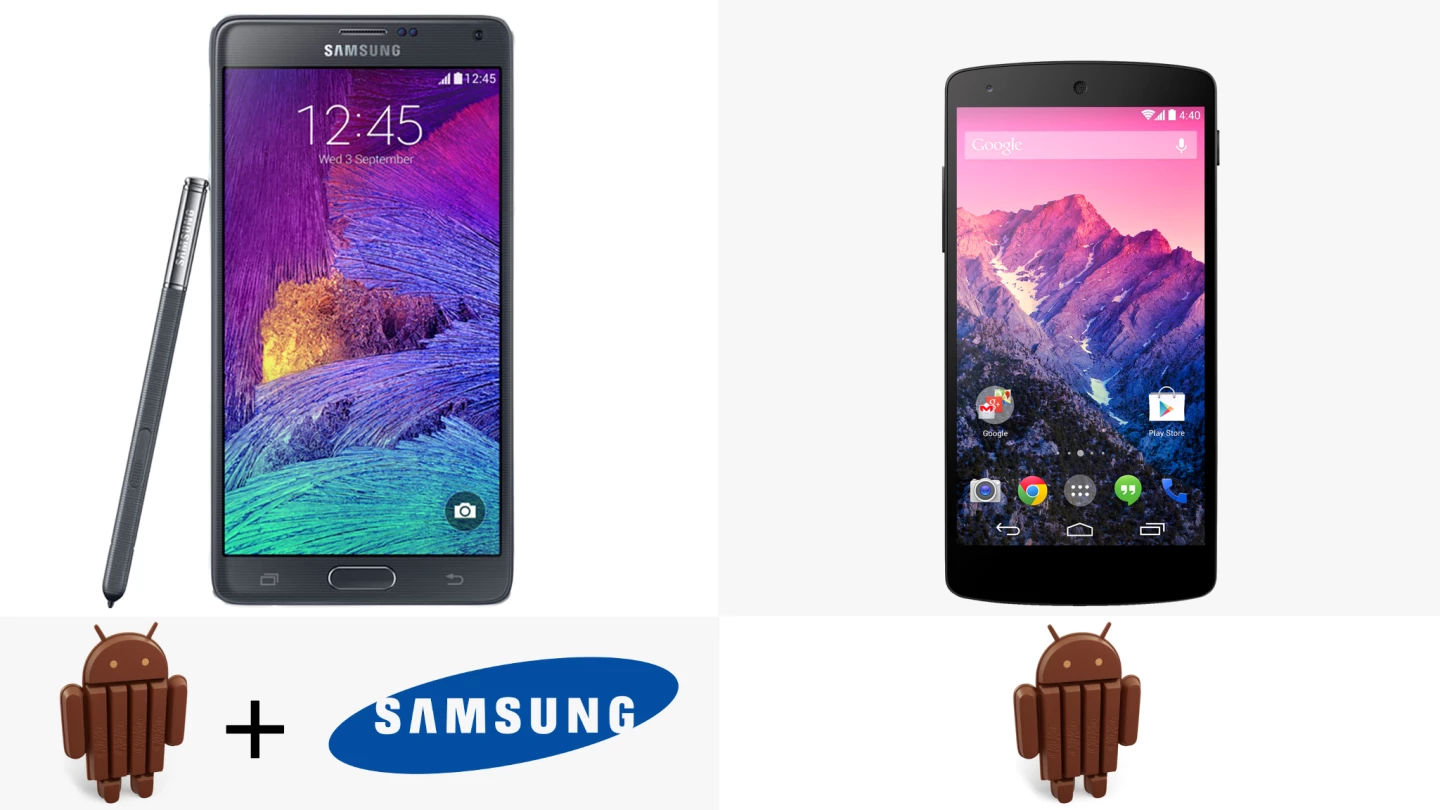
One of the biggest draws of the Nexus 5 is its stock Android credentials. The device’s 4.4 KitKat software is free from manufacturer augmentation, offering a simple, slick look and deep integration with Google features and services.
Things aren’t drastically different with Samsung’s handset. The company puts its own UI overlay on the latest version of Google's OS, changing the look of the software while adding a bevy of extra features, including the aforementioned split-screen multitasking and several stylus-based goodies.
Release
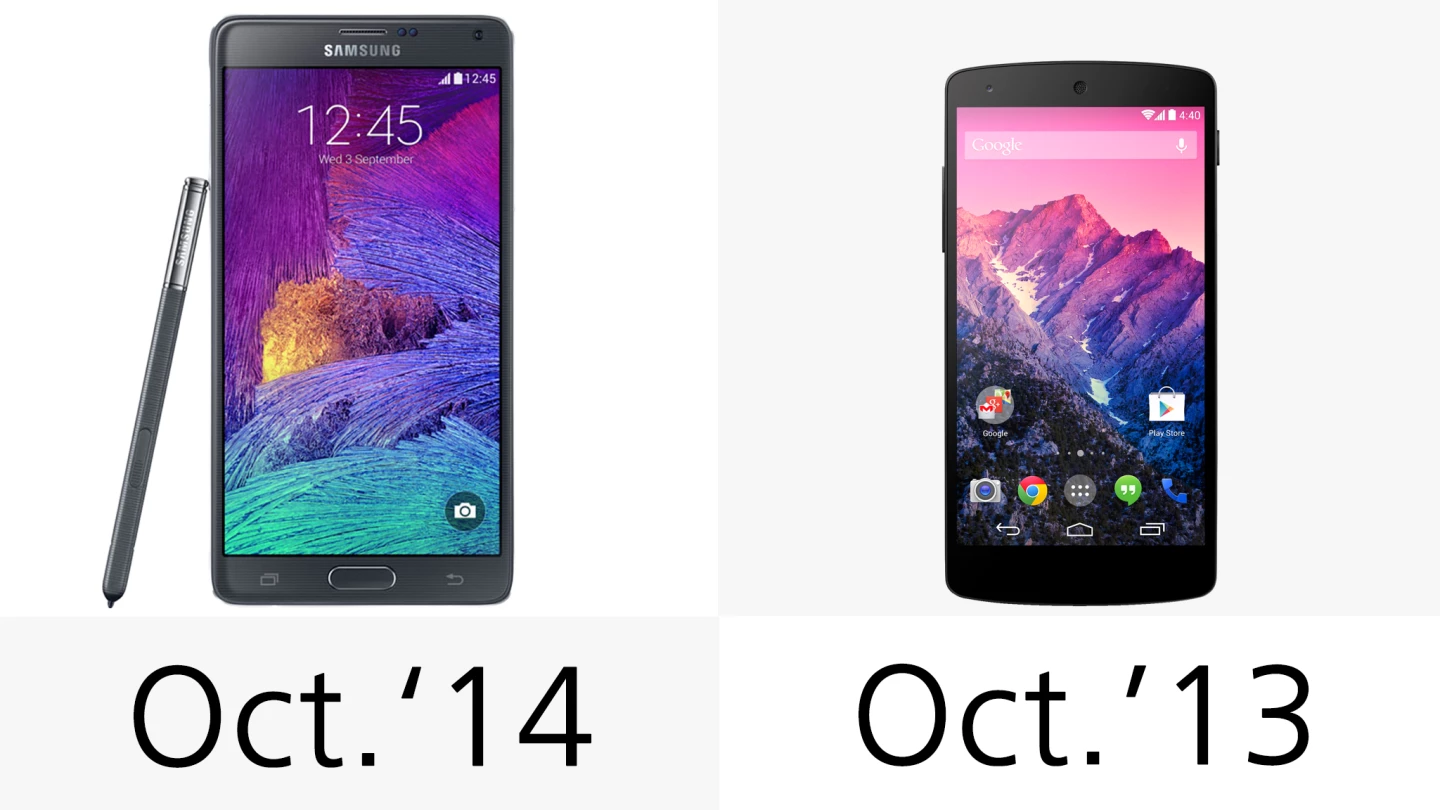
The Galaxy Note 4 is set to hit shelves next month (October 17), at which point the Nexus 5 will have been available for a full year. With the pace that mobile technology develops, that’s practically an eternity.
With that said, though, the Nexus 5 is still holding up pretty damn well. It's camera isn't the greatest, but there aren't any other areas where it feels particularly dated.
Starting price (off-contract)
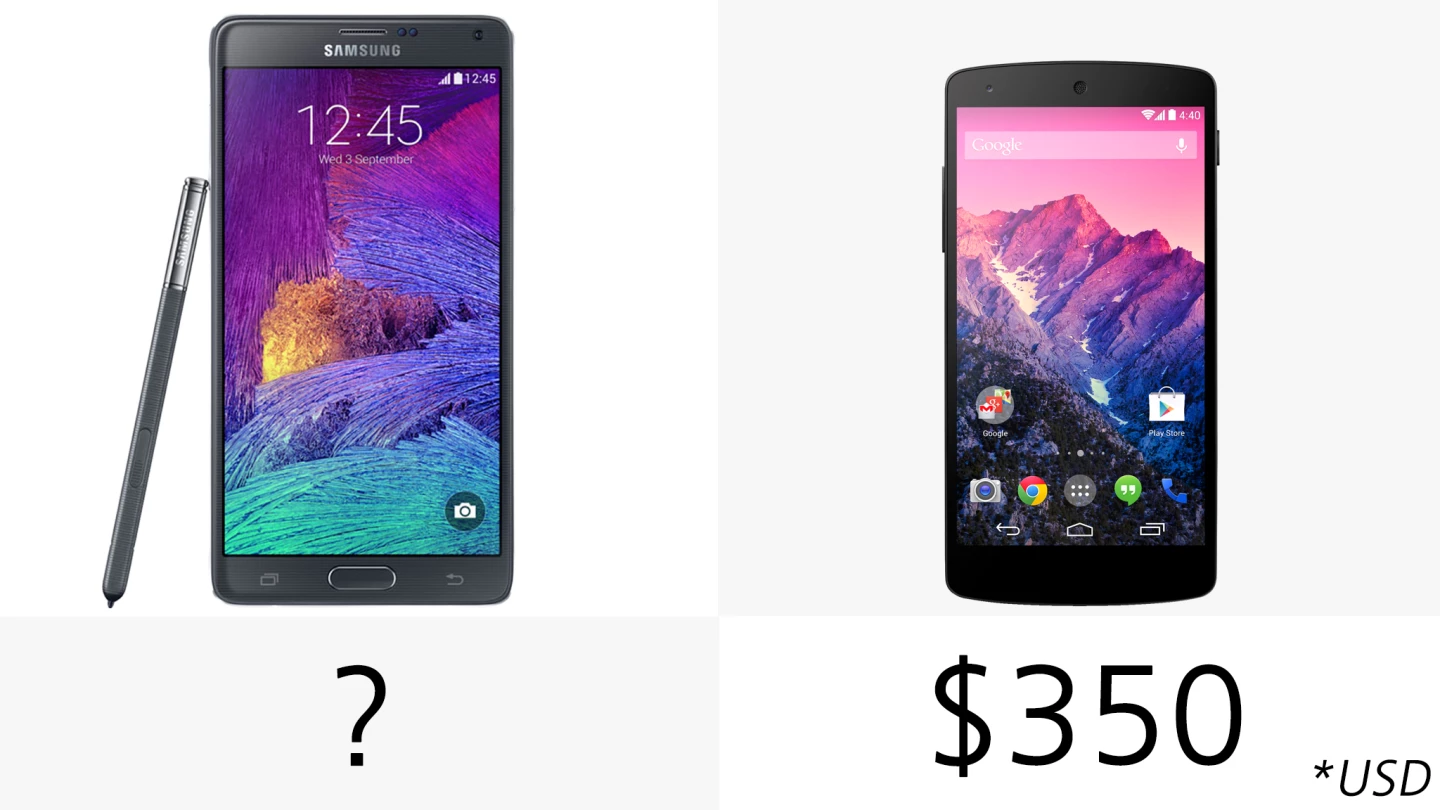
The Nexus 5’s price tag is easily its biggest draw. While most flagship smartphones are pegged at around US$650, the LG-made handset undercuts the market by offering high-end specs for just $350.
Samsung hasn't announced official pricing for the Note 4, but we're placing our bets on the same $700 off-contract (usually $300 on-contract) price points where the Note 3 launched.
If you’re interesting in reading more about the Nexus 5, then you can check out our full review. If you’re waiting for the Note 4 to land, then you can always head over to our hands-on look at the phablet.




























